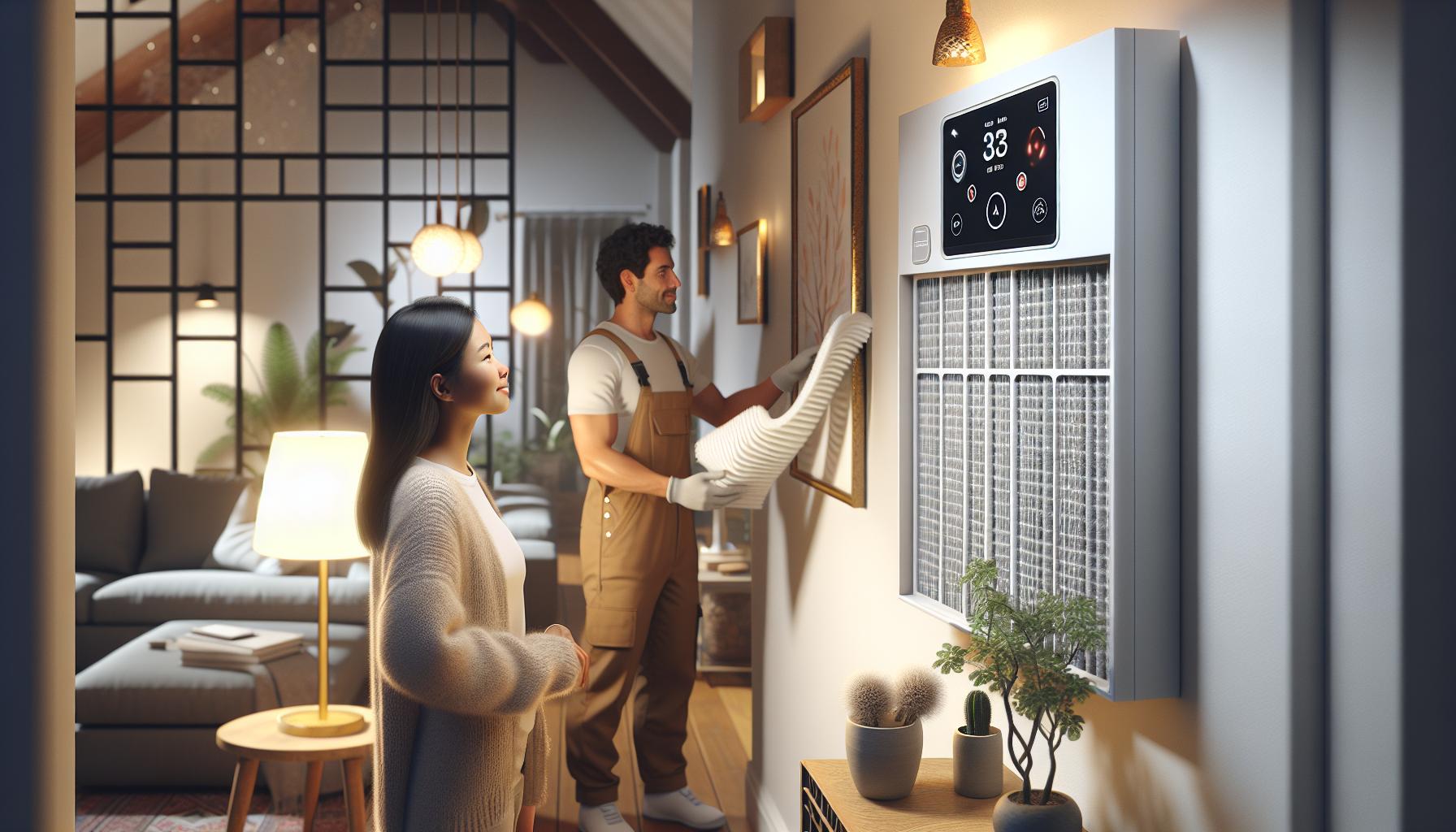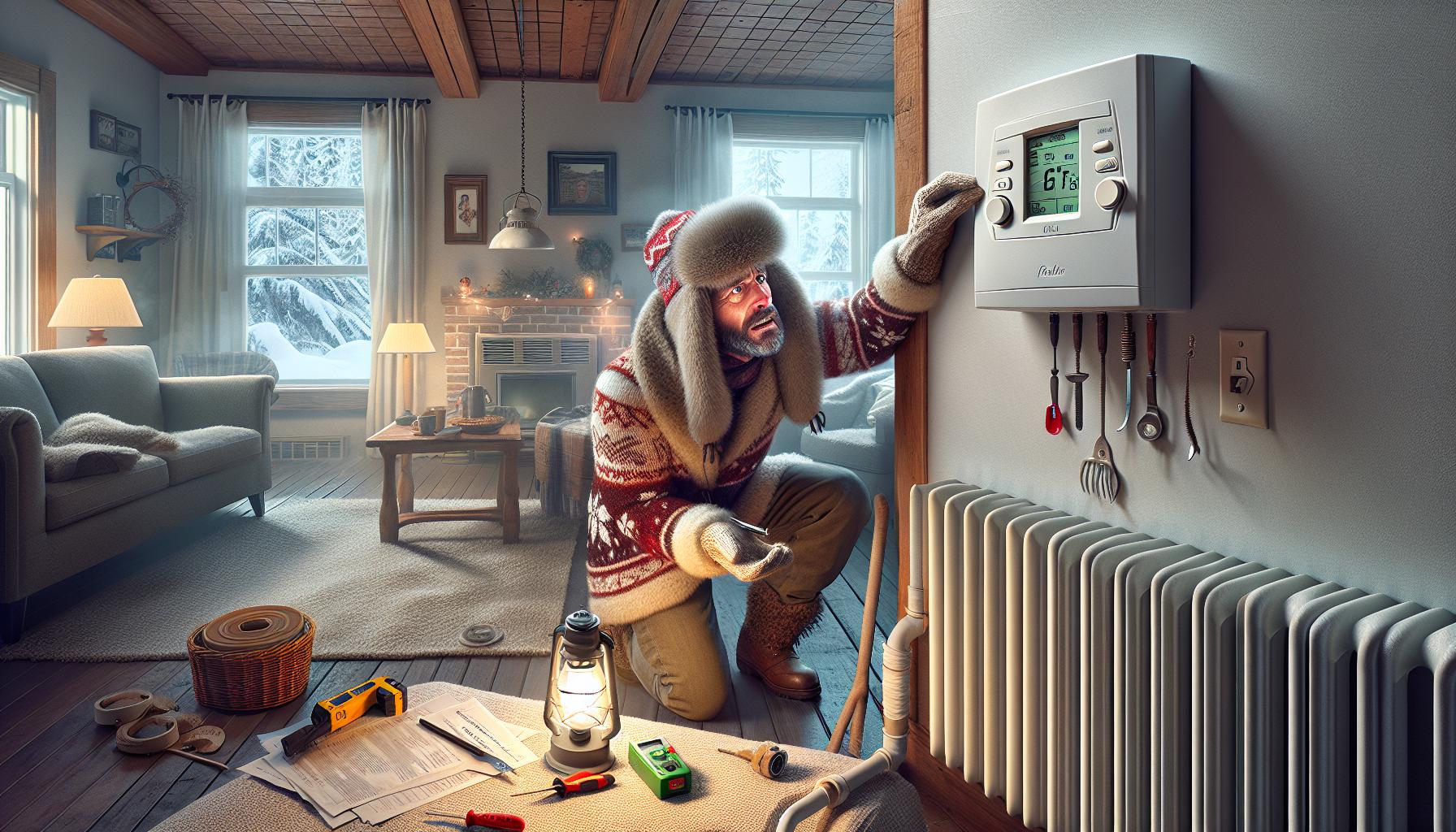Imagine it’s a chilly winter evening, and you eagerly turn on your heating system, only to be met with an unwelcome blast of cold air from the vents. Suddenly, your cosy night in is at risk, and you’re left wondering what’s gone wrong. This article delves into the common issues that can cause your heating system to fail, providing you with essential troubleshooting tips to restore warmth to your home.
Understanding why no heat is coming out of your vents is crucial for maintaining a comfortable living environment. From clogged filters to malfunctioning thermostats, several factors could be at play. We’ll guide you through each potential problem, offering practical solutions to get your heating system back on track.
By the end of this article, you’ll have a clearer grasp of the underlying causes and be better equipped to tackle the issue head-on. Say goodbye to shivering indoors and hello to a toasty, inviting home.
Common Causes Of No Heat Coming Out Of Vents In House
Understanding why your heating system isn’t working can save you time and prevent discomfort. Here are some common causes to investigate:
Thermostat Issues
Incorrect thermostat settings often cause heating problems. Ensure it’s set to “heat,” not “cool.” The fan should be on “AUTO” to avoid blowing cold air. Replace dead batteries if your thermostat uses them. If these steps don’t help, the thermostat might be faulty.
Clogged Air Filters
Dirty filters restrict airflow, making it seem like no heat is coming from the vents. Change the air filter every three to four months to maintain proper airflow and avoid heating issues.
Pilot Light Problems
Gas heating systems rely on a pilot light. If it’s out, the system can’t generate heat. Check if the pilot light is lit and follow your furnace’s manual to relight it. If it won’t stay lit, you might need professional help.
Faulty Ductwork
Leaky or blocked ducts can prevent warm air from reaching your rooms. Inspect ducts for visible damage or obstructions. Sealing leaks and clearing blockages can restore proper airflow and heating efficiency.
Diagnosing The Problem

If no heat is coming out of your vents, several potential causes might be affecting your heating system. Addressing these issues can help restore warmth to your home.
Checking The Thermostat
Ensure the thermostat is set to “heat” and the fan switch is on “AUTO.” Verify that the temperature is set a few degrees higher than the room temperature.
Inspecting Air Filters
A dirty air filter can restrict airflow, causing the furnace to malfunction. Check and replace the air filter if it’s clogged. Replace filters every three to four months for optimal performance.
Examining The Pilot Light
Check the pilot light if you have a gas heating system. Refer to the furnace manual for relighting instructions if the pilot light is out. A lit pilot light is essential for the furnace to produce heat.
Assessing Ductwork
Inspect ductwork for leaks or blockages. Leaky or blocked ducts can prevent warm air from circulating properly. Seal any leaks and remove blockages to ensure efficient heat distribution.
Solutions For Fixing The Problem
To restore warmth to your home, follow these essential steps to troubleshoot and fix the issue of no heat coming out of vents.
Adjusting The Thermostat
Ensure the thermostat is set to “heat” mode and the fan is on “AUTO”. Replace the batteries if necessary and set the temperature a few degrees higher than the room temperature.
Replacing Air Filters
Check for clogged air filters that can restrict airflow. Replace dirty filters regularly, ideally every month, to ensure optimal airflow and prevent furnace malfunctions.
Relighting The Pilot Light
For gas heating systems, check if the pilot light is lit. Follow the furnace manual for relighting instructions if the pilot light is out, ensuring it stays on for proper operation.
Repairing Or Replacing Ductwork
Inspect ductwork for leaks or blockages that hinder warm air distribution. Seal any leaks and remove blockages to ensure efficient heating throughout your home. Consider professional help if extensive repairs are needed.
When To Call A Professional
Sometimes, DIY troubleshooting isn’t enough to resolve heating issues. Knowing when to call a professional can save time and prevent further damage.
Recognising Serious Issues
If the furnace emits strange noises, smells gas, or frequently cycles on and off, it’s time to call a professional. These could indicate serious mechanical or safety issues.
Understanding The Cost And Benefits
Professional repairs can be costly, but they ensure safety and efficiency. Investing in professional help can extend your system’s lifespan and improve performance, eventually saving money on energy bills and future repairs.
Preventive Measures To Avoid Future Issues
Implementing preventive measures can help maintain the efficiency of your heating system and avoid disruptions. Focus on regular maintenance and consider upgrading your HVAC system for optimal performance.
Regular Maintenance
Schedule regular maintenance checks every six months. This involves inspecting and cleaning air filters, checking ductwork for leaks, and ensuring the thermostat operates correctly.
Upgrading HVAC Systems
Consider upgrading your HVAC system if it’s over 10 years old. Modern systems offer improved energy efficiency, which can lower your energy bills and enhance overall performance.
Conclusion
Addressing the issue of no heat coming from your vents can be daunting, but by understanding and troubleshooting the common causes, you can often restore warmth to your home efficiently. Regular maintenance and being proactive about checking filters, thermostats, and ductwork will help keep your heating system running smoothly.
Don’t hesitate to call a professional if you encounter serious issues like strange noises, gas smells, or frequent cycling. Investing in regular maintenance and considering an HVAC upgrade for older systems can enhance performance and save you money in the long run. Keeping your home warm and comfortable is achievable with the right knowledge and actions.
